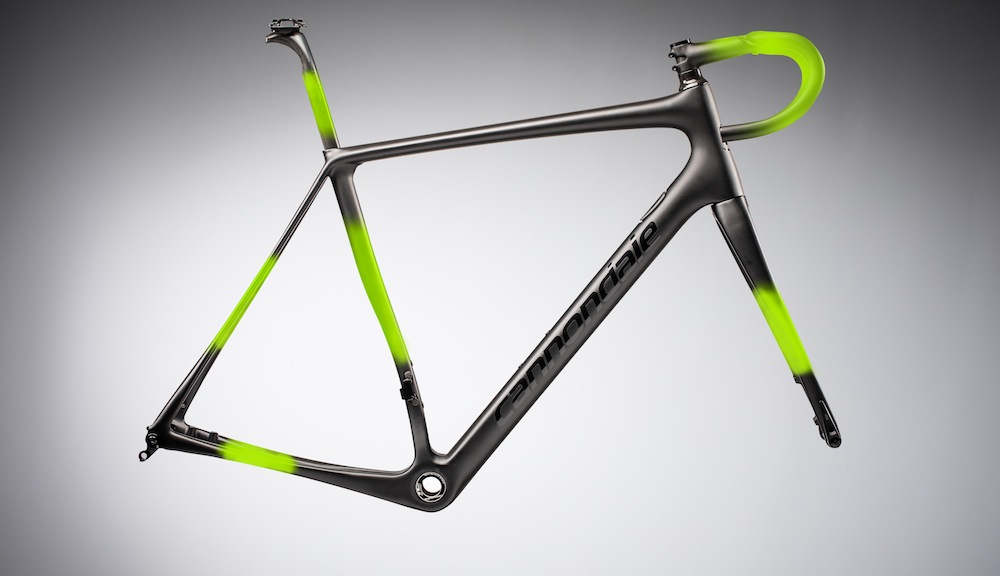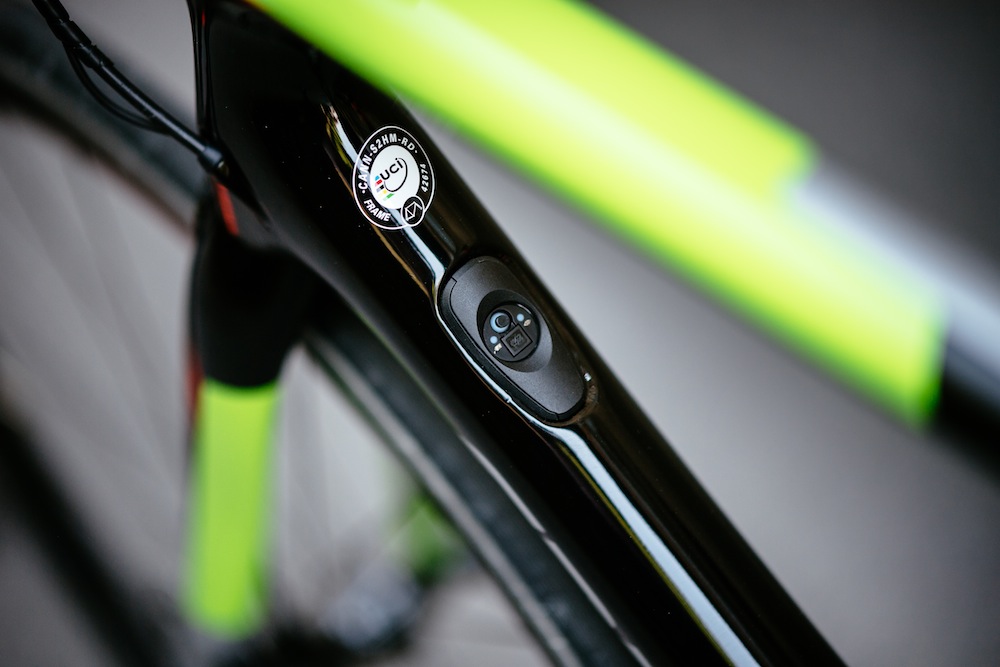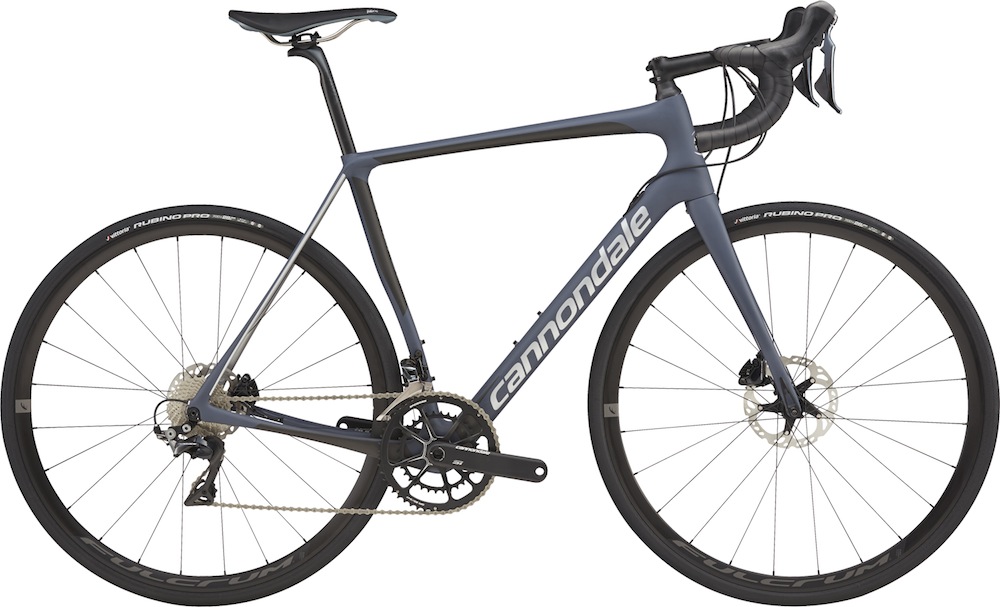New 2018 Cannondale Synapse launched: first ride (video)
The new Cannondale Synapse endurance bike is claimed to be lighter and stiffer than the previous version, and will only be available with disc brakes

Outwardly the new Cannondale Synapse may look very similar to the previous model. However, appearances can be deceptive. The new platform is a completely different bike with a completely different carbon layup and several subtle but significant differences, the main being that the new model will only be available with disc brakes.
First launched in 2006 the Cannondale Synapse is a bike known for combining great ride quality, confident handling, relaxed geometry and versatility. With the race-orientated SuperSix Evo, Cannondale places the emphasis on stiffness, low weight and aggressive geometry, whereas with the Synapse the design objectives centre around compliance, a smoother ride, greater integration and increased versatility (the ability to ride on a wider range of surfaces).
>>> Cannondale Synapse disc Tiagra up close
Within the endurance road bike category, the Cannondale Synapse is a highly regarded machine that has won many awards and fans. It's been around a while with this, the latest version of the Synapse following the original model launched in 2006 and a second iteration in 2014. The new bike features greater integration, but doesn't set its stall out as an aero bike.

Cannondale Synapse frame and features
One of the first questions asked when a new bike is launched is inevitably "how much does it weigh?" The new Cannondale Synapse has a claimed frame weight of 918g and fork weight of 372g for a size 56cm. I should point out that these weights are for an unpainted frame and fork, with paint likely to add 150-200g. The frame and fork weight does, however, represent a significant reduction of 220g over the previous Cannondale Synapse.

Cannondale describes the reduction in weight as "getting disc brakes for free", which is a nice way of looking at it.
SAVE
SAVE is at the heart of the Cannondale Synapse and stands for Synapse Active Vibration Elimination. Essentially this is an umbrella term for design features that increase comfort and compliance with the picture below illustrating the key areas where it is employed.
The latest race content, interviews, features, reviews and expert buying guides, direct to your inbox!

The proprietary 25.4mm seat post is the same as that found on the SuperSix Evo Hi-Mod and is designed to offer deflection. Deflection and vertical compliance are also built into the stays and fork.

One of the key new features of the new Synapse is the SAVE system bar, which is also designed to improve comfort and offer deflection. Cannondale claims the bar is able to offer 4-6mm of added comfort under normal riding conditions.

The SAVE system bar isn't just for compliance, though – it offers the aesthetically pleasing clean lines of an integrated bar and stem but has been designed as two separate components with interchangable bar and stems offered, allowing the customer to get the exact cockpit dimensions they require.
Stems are available in +/-6º of rise and the bar clamp system allows 8º of rotation adjustment. There are multiple stem lengths and bar widths available, of course. Although aero in section, the tops of the SAVE system bar deliberately have the same diameter as a traditional round bar.

Features retained from the previous Cannondale Synapse
The Power Pyramid bottom bracket is retained from the previous version. This design feature is intended to reduce weight where it isn't needed, allowing the engineers to place that carbon in more structurally important areas of the bottom bracket, increasing torsional stiffness in the process. Put simply, Cannondale claims the Power Pyramid saves weight while retaining stiffness. It is found on the Hi-Mod top-end framesets, but is absent on other models.

Asymmetry
Asymmetry continues to feature and, according to Cannondale, this combined with the refined carbon layup has significantly improved the stiffness. Below is a comparison chart from the Zedler Institute test lab that compares the stiffness of the new Synapse against other leading disc brake-equipped road bikes.

Size-0ptimised design
The new Synapse has also been optimised for each size, meaning that a 49cm is comparable in stiffness to a 61cm frame. This is an area that has been neglected by many bike designers in the past, so it's reassuring for those buying a size at the extreme end of the size range. Further to this, Cannondale has refined the sizing, making it a more linear progression. Cervélo was one of the first brands to do this and it can make buying the correct size easier. Cannondale has also designed women's-specific models with different frames and geometries.

Geometry
Being an endurance bike, the geometry is more relaxed than that of most out-and-out race bikes. In a size 56cm, the Cannondale Synapse is 2cm higher in stack and 1cm shorter in reach than a SuperSix Evo. The seat tube and head tube angles are very similar to those of the Evo, though. Overall the geometry is not as relaxed as many endurance/sportive bikes, with Cannondale intending to strike a balance between comfort and the exhilaration and excitement of getting long and low.

Mudguards
To further expand the versatility of the Synapse, the new design features clearance and mounts for mudguards.

The mounts are subtle and hidden on the frame. This creates a nice clean look when they are not required, yet adds potential versatility if and when you need it. You can also see the seatpost bolt in the below photo.

Riding
The new Cannondale Synapse was launched on the banks of Lake Como in Italy: a ridiculously beautiful part of the world that also features varied terrain and roads that are ideal for testing a new bike. There are mixed surfaces, flat roads, rolling roads and plenty of climbs, including the 9km Madonna del Ghisallo, a famous climb that has featured in both the Giro d'Italia and Il Lombardia.

The model I rode was the top of the range Hi-Mod frameset equipped with SRAM Red eTap HRD. It is my understanding that this particular frame will be fitted with Dura-Ace Di2 when it goes on sale, but this wasn't available at the time of the launch.
Having ridden the older model my first impression, as we headed out on the first test ride, was that the Cannondale Synapse felt familiar. Cannondale's engineers have a knack for translating geometry into great handling, something that is especially noticeable on the SuperSix Evo and has also been achieved with the Synapse. If you have ridden an Evo, the new Synapse feels familiar.
Heading up the Ghisallo, I gave it the beans and got out the saddle. The first thing I noticed was the handling of the front end. The geometry achieves a good balance and stiffness is great when gunning it out of the saddle. It is not quite as nimble as the featherweight Evo Hi-Mod, but feels more at home on the climbs than many rival disc brake-equipped endurance road bikes such as the Trek Domane.

Descending on the Synapse was an absolute joy. The confidence-inspiring ride feel of the SuperSix Evo is also present here and the improvements in head tube stiffness are noticeable. I was able to take the bike down a number of technical descents and when really digging into tight switchbacks the Cannondale Synapse carves beautifully like a slalom skier.
Stability and smoothness are very good indeed, something which I feel is really enhanced by the wide 28mm tyres fitted to our test bikes.
Fundamentally the new Cannondale Synapse is exciting to ride, with handling that feels more like that of a race bike than a sportive bike. The geometry is more relaxed than the Supersix Evo's: the wheelbase is a bit longer, the fork rake a little longer, it's a little shorter and a little higher at the front end but Cannondale hasn't gone for as relaxed a frame as most endurance bikes out there and I like this.
Models and pricing
The Cannondale Synapse will be available in disc only and can accommodate flat-mount 160 or 140mm rotors. There are also women's-specific models with different geometry. Two different framesets are offered with different layups: the Hi-Mod Synapse I rode at the launch and the less expensive BallisTec Carbon frame, which although slightly heavier than the new Hi-Mod is actually lighter than the old Hi-Mod Synapse. One of the distinguishing features between the Hi-Mod and BallisTec carbon frames is the lack of Power Pyramid split seat tube on the lower-priced model.

Top of the range will be the Hi-Mod Dura-Ace Di2 bike at £7,799.99. This model will feature the same paint job as the one I rode that's in the majority of the pictures.

Women's Carbon models
Synapse Carbon Ultegra £2,699.99
Synapse Carbon Ultegra Di2 £3,699.99
Men's Carbon models
Synapse Carbon 105 £2,199.99
Synapse Carbon Ultegra £2,699.99
Synapse Carbon SE Ultegra £3,249.99 (single-ring 1x)
Synapse Carbon Ultegra Di2 3,799.99
Synapse Carbon Dura-Ace £3,999.99 (comes with the SAVE bar)
Synapse Carbon eTap £4,999.99 (comes with the SAVE bar)

Hi-Mod models
Note: all Hi-Mod models come with the SAVE handlebar
Hi-Mod Dura-Ace £4,999.99
Hi-Mod eTap £7,799.99
Hi-Mod Dura-Ace Di2 £7,799.99
Oliver Bridgewood - no, Doctor Oliver Bridgewood - is a PhD Chemist who discovered a love of cycling. He enjoys racing time trials, hill climbs, road races and criteriums. During his time at Cycling Weekly, he worked predominantly within the tech team, also utilising his science background to produce insightful fitness articles, before moving to an entirely video-focused role heading up the Cycling Weekly YouTube channel, where his feature-length documentary 'Project 49' was his crowning glory.